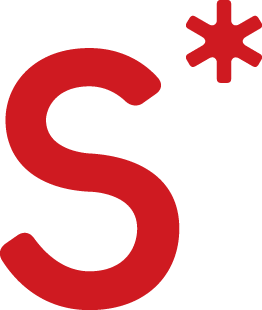
With the new ruling affecting images and Twitter retweets, we thought it would be helpful to update and re-publish this post about plagiarism, first published in 2016.
In a world of content marketing, when over 2 million new blog posts are being published every day, will someone really notice if a few lines, or paragraphs, or articles are the same as others?
Yes.
Even with online tools (see below) being used to catch plagiarism, which makes it easier than ever to spot a fake, plagiarism is still rampant. Continue reading to learn what plagiarism is, how it can negatively affect your business, and how to prevent it.
What is plagiarism?
According to Wikipedia, plagiarism is when someone takes another’s “language, thoughts, ideas, or expressions” and passes them off as their own. While plagiarism itself isn’t necessarily a crime, certain cases can be considered copyright infringement, which is punishable by law. Plagiarism is also considered an ethical offense and can have serious consequences in academia, journalism, and other industries.
How can plagiarism negatively affect business?
If plagiarism accusations come to your business, it can affect many aspects of your company. Your company can be tainted by the accusations (true or otherwise) and can lose the trust of your customers. It can crush the credibility of your website and associated materials, such as webinars, presentations, and downloadable materials. In severe cases, it can cost your company dearly in monetary losses. The best advice is to make sure plagiarism doesn’t happen in the first place.
How can plagiarism be prevented?
There are many citation handbooks that describe various methods of citing sources and attributing ideas. These include Modern Language Association (MLA), American Psychological Association (APA), and Associated Press (AP), and usually relate to a specific industry where citations in academic papers are a common occurrence. While a typical blog post may not follow a specific citation method, it is still important to cite sources and give credit where credit is due, which is the key to avoiding unnecessary plagiarism.
When quoting directly, use double quotation marks to indicate a direct quote and include who says the quote:
Joe Blevins adds that “the humble T-shirt has been a part of American life since World War I, when doughboys brought them back from France.”
When paraphrasing a specific sentence or whole paragraph, quotation marks are unnecessary, but attribution should still be given:
In his article, Joe Blevins explains that t-shirts became popular in America after World War I soldiers saw them in France.
Instead of using common citation formats such as superscript numbers which correspond to a list of references at the end of an article or using parenthesis to lists author, title, and year of publication after every quote or paraphrase, adding a link is a simple way to signify the original source of the information. If you’re using information that’s common knowledge (like that World War I was from 1914-1918), citation is unnecessary, even if you had to look it up.
A good rule of thumb: when in doubt, cite it.
The cases above relate to those who are writing blog posts or articles who try to do their due diligence to make sure that other authors words and work are credited. But how can a manager make sure that writers aren’t purposefully plagiarizing to meet a deadline or increase viewership?
There is a mountain of free and paid plagiarism sites that can be put to use:
- Instinct: If a writer’s tone, style, or syntax changes unnecessarily often or without reason, it might warrant a closer look. Or they could be experimenting with how different writing styles affect audience engagement.
- Google: If your ‘Spidey sense’ is tingling and a phrase stands out, copy and paste the phrase into the Google search bar. From there, you can see whether the phrase is a word-for-word copy and cause for a more in-depth look, or if it’s a general phrase used in a multitude of places.
- Small SEO Tools: This site checks words copied and pasted into their text form or a Word document, while also excluding certain URLs. As it checks the document, it will point out what phrases it found that are exact copies and what percentage of the document is original.
- Grammarly: This subscription site has a plagiarism checker, and has features that checks quality of writing in various ways. It has the option of browser extensions and email add-ons.
- TinEye: A reverse image lookup site, you can upload an image or copy a URL to see where else an image appears on the Internet. With free sites like Unsplash being used to provide bloggers with attribution-free images, having a high number of results come back isn’t necessarily a cause for concern.
Creating standards internally will help make sure that plagiarism or other bad habits don’t show up externally to consumers and customers. Including a section on content writing and the consequences of plagiarism in a brand guideline or other company document can help curb temptation to copy others’ work. In an age where anyone can say anything, make your content standout by providing credible intel and making integrity the first priority.
To learn how you can take your content to the next level, talk to us today.
{{cta(‘1c2ba02f-7461-414a-a1d2-2db32fb85b77’)}}
